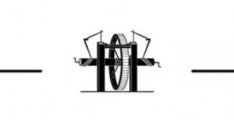php计算奇数阶乘之和_php求1+23
Util.js 是对常用函数的封装php计算奇数阶乘之和,方便在实际项目中使用php计算奇数阶乘之和,主要内容包含:数组类、浏览器类、日期类、函数类、数学类、媒体类、节点类、对象类、字符串类、类型检测类、正则表达式类等内容。
数组arrayMax返回数组中的最大值。
将Math.max()与扩展运算符 (...) 结合使用以获取数组中的最大值。
const arrayMax = arr => Math.max(...arr);// arrayMax([10, 1, 5]) -> 10arrayMin返回数组中的最小值。
将Math.min()与扩展运算符 (...) 结合使用以获取数组中的最小值。
const arrayMin = arr => Math.min(...arr);// arrayMin([10, 1, 5]) -> 1chunk将数组块划分为指定大小的较小数组。
使用Array.from()创建新的数组, 这符合将生成的区块数。使用Array.slice()将新数组的每个元素映射到size长度的区块。如果原始数组不能均匀拆分, 则最终的块将包含剩余的元素。
const chunk = (arr, size) =>Array.from({length: Math.ceil(arr.length / size)}, (v, i) => arr.slice(i * size, i * size + size));// chunk([1,2,3,4,5], 2) -> [[1,2],[3,4],[5]]compact从数组中移除 falsey 值。
使用Array.filter()筛选出 falsey 值 (false、null、0、""、undefined和NaN).
const compact = (arr) => arr.filter(Boolean);// compact([0, 1, false, 2, '', 3, 'a', 'e'*23, NaN, 's', 34]) -> [ 1, 2, 3, 'a', 's', 34 ]countOccurrences计算数组中值的出现次数。
使用Array.reduce()在每次遇到数组中的特定值时递增计数器。
const countOccurrences = (arr, value) => arr.reduce((a, v) => v === value ? a + 1 : a + 0, 0);// countOccurrences([1,1,2,1,2,3], 1) -> 3deepFlatten深拼合数组。
使用递归。使用Array.concat()与空数组 ([]) 和跨页运算符 (...) 来拼合数组。递归拼合作为数组的每个元素。
const deepFlatten = arr => [].concat(...arr.map(v => Array.isArray(v) ? deepFlatten(v) : v));// deepFlatten([1,[2],[[3],4],5]) -> [1,2,3,4,5]difference返回两个数组之间的差异。
从b创建Set, 然后使用Array.filter() on 只保留a b中不包含的值.
const difference = (a, b) => { const s = new Set(b); return a.filter(x => !s.has(x)); };// difference([1,2,3], [1,2,4]) -> [3]distinctValuesOfArray返回数组的所有不同值。
使用 ES6 Set和...rest运算符放弃所有重复的值。
const distinctValuesOfArray = arr => [...new Set(arr)];// distinctValuesOfArray([1,2,2,3,4,4,5]) -> [1,2,3,4,5]dropElements移除数组中的元素, 直到传递的函数返回true。返回数组中的其余元素。 在数组中循环, 使用Array.shift()将数组的第一个元素除去, 直到函数的返回值为true。返回其余元素。
const dropElements = (arr, func) => {while (arr.length > 0 && !func(arr[0])) arr.shift();return arr;};// dropElements([1, 2, 3, 4], n => n >= 3) -> [3,4]everyNth返回数组中的每个第 n 个元素。
使用Array.filter()创建一个包含给定数组的每个第 n 个元素的新数组。
const everyNth = (arr, nth) => arr.filter((e, i) => i % nth === 0);// everyNth([1,2,3,4,5,6], 2) -> [ 1, 3, 5 ]filterNonUnique筛选出数组中的非唯一值。
对于只包含唯一值的数组, 请使用Array.filter()。
const filterNonUnique = arr => arr.filter(i => arr.indexOf(i) === arr.lastIndexOf(i));// filterNonUnique([1,2,2,3,4,4,5]) -> [1,3,5]flatten拼合数组。
使用Array.reduce()获取数组中的所有元素和concat()以拼合它们。
const flatten = arr => arr.reduce((a, v) => a.concat(v), []);// flatten([1,[2],3,4]) -> [1,2,3,4]flattenDepth将数组向上拼合到指定深度。
使用递归, 递减depth, 每层深度为1。使用Array.reduce()和Array.concat()来合并元素或数组。基本情况下, 对于等于1的depth停止递归。省略第二个元素,depth仅拼合到1的深度 (单个拼合)。
const flattenDepth = (arr, depth = 1) =>depth != 1 ? arr.reduce((a, v) => a.concat(Array.isArray(v) ? flattenDepth(v, depth - 1) : v), []): arr.reduce((a, v) => a.concat(v), []);// flattenDepth([1,[2],[[[3],4],5]], 2) -> [1,2,[3],4,5]groupby根据给定函数对数组元素进行分组。
使用Array.map()将数组的值映射到函数或属性名。使用Array.reduce()创建一个对象, 其中的键是从映射的结果生成的。
const groupBy = (arr, func) =>arr.map(typeof func === 'function' ? func : val => val[func]).reduce((acc, val, i) => { acc[val] = (acc[val] || []).concat(arr[i]); return acc; }, {});// groupBy([6.1, 4.2, 6.3], Math.floor) -> {4: [4.2], 6: [6.1, 6.3]}// groupBy(['one', 'two', 'three'], 'length') -> {3: ['one', 'two'], 5: ['three']}head返回列表的头。
使用arr[0]可返回传递的数组的第一个元素。
const head = arr => arr[0];// head([1,2,3]) -> 1initial返回除最后一个数组之外的所有元素。
使用 "arr.slice(0,-1)" 返回数组的最后一个元素。
const initial = arr => arr.slice(0, -1);// initial([1,2,3]) -> [1,2]initializeArrayWithRange初始化包含指定范围内的数字的数组。
使用Array(end-start)创建所需长度的数组Array.map()以填充区域中所需的值。可以省略start以使用默认值0.
const initializeArrayWithRange = (end, start = 0) =>Array.from({ length: end - start }).map((v, i) => i + start);// initializeArrayWithRange(5) -> [0,1,2,3,4]initializeArrayWithValues初始化并填充具有指定值的数组。
使用Array(n)创建所需长度的数组,fill(v)以填充所需的值。可以省略value以使用默认值0.
const initializeArrayWithValues = (n, value = 0) => Array(n).fill(value);// initializeArrayWithValues(5, 2) -> [2,2,2,2,2]intersection返回两个数组中存在的元素的列表。
从b创建Set, 然后使用Array.filter()on a只保留b中包含的值.
const intersection = (a, b) => { const s = new Set(b); return a.filter(x => s.has(x)); };// intersection([1,2,3], [4,3,2]) -> [2,3]last返回数组中的最后一个元素。
使用arr.length - 1可计算给定数组的最后一个元素的索引并返回它。
const last = arr => arr[arr.length - 1];// last([1,2,3]) -> 3mapObject使用函数将数组的值映射到对象, 其中键值对由原始值作为键和映射值组成。
使用匿名内部函数范围来声明未定义的内存空间, 使用闭包来存储返回值。使用新的Array可将该数组与函数的映射放在其数据集上, 而逗号运算符返回第二个步骤, 而不需要从一个上下文移动到另一个环境 (由于关闭和操作顺序)。
const mapObject = (arr, fn) => (a => (a = [arr, arr.map(fn)], a[0].reduce( (acc,val,ind) => (acc[val] = a[1][ind], acc), {}) )) ( );/*const squareIt = arr => mapObject(arr, a => a*a)squareIt([1,2,3]) // { 1: 1, 2: 4, 3: 9 }*/nthElement返回数组的第 n 个元素。
使用Array.slice()可获取包含第 n 个元素的数组。如果索引超出界限, 则返回[]。省略第二个参数n, 以获取数组的第一个元素。
const nthElement = (arr, n=0) => (n>0? arr.slice(n,n+1) : arr.slice(n))[0];// nthElement(['a','b','c'],1) -> 'b'// nthElement(['a','b','b'],-3) -> 'a'pick从对象中选取对应于给定键的键值对。
使用Array.reduce()将筛选/选取的密钥转换回具有相应键值对的对象 (如果在 obj 中存在该键)。
const pick = (obj, arr) =>arr.reduce((acc, curr) => (curr in obj && (acc[curr] = obj[curr]), acc), {});// pick({ 'a': 1, 'b': '2', 'c': 3 }, ['a', 'c']) -> { 'a': 1, 'c': 3 }pull对原始数组进行变异, 以筛选出指定的值。
使用Array.filter()和Array.includes()来拉出不需要的值。使用Array.length = 0可将传入的数组中的长度重置为零, 并将其设置为Array.push(), 以便仅使用所提取的值填充它。
const pull = (arr, ...args) => {let pulled = arr.filter((v, i) => !args.includes(v));arr.length = 0; pulled.forEach(v => arr.push(v));};// let myArray = ['a', 'b', 'c', 'a', 'b', 'c'];// pull(myArray, 'a', 'c');// console.log(myArray) -> [ 'b', 'b' ]remove从数组中移除给定函数返回false的元素. 使用Array.filter()查找返回 truthy 值的数组元素和Array.reduce()以使用Array.splice()删除元素。使用三参数 (func value, index, array调用函数).
const remove = (arr, func) =>Array.isArray(arr) ? arr.filter(func).reduce((acc, val) => {arr.splice(arr.indexOf(val), 1); return acc.concat(val);}, []): [];// remove([1, 2, 3, 4], n => n % 2 == 0) -> [2, 4]sample返回数组中的随机元素。
使用Math.random()生成一个随机数, 将它与length相乘, 并使用数学将其舍入到最接近的整数Math.floor()。此 *** 也适用于字符串。
const sample = arr => arr[Math.floor(Math.random() * arr.length)];// sample([3, 7, 9, 11]) -> 9shuffle随机数组值的顺序。
使用Array.sort()可在比较器中使用Math.random()重新排序元素。
const shuffle = arr => arr.sort(() => Math.random() - 0.5);// shuffle([1,2,3]) -> [2,3,1]similarity返回两个数组中都显示的元素的数组。
使用filter()可删除不属于values的值, 使用includes()确定.
const similarity = (arr, values) => arr.filter(v => values.includes(v));// similarity([1,2,3], [1,2,4]) -> [1,2]symmetricDifference返回两个数组之间的对称差。
从每个数组创建一个Set, 然后对它们中的每一个都使用Array.filter(), 以便只保留其他值中不包含的数值。
const symmetricDifference = (a, b) => {const sA = new Set(a), sB = new Set(b);return [...a.filter(x => !sB.has(x)), ...b.filter(x => !sA.has(x))];}// symmetricDifference([1,2,3], [1,2,4]) -> [3,4]tail返回数组中的所有元素, 除第一个。
如果数组的length大于1, 则返回arr.slice(1), 否则返回整个数组。
const tail = arr => arr.length > 1 ? arr.slice(1) : arr;// tail([1,2,3]) -> [2,3]// tail([1]) -> [1]take返回一个数组, 其中 n 个元素从开始处移除。
使用Array.slice()创建数组的切片, 其中包含从开始处取出的n元素。
const take = (arr, n = 1) => arr.slice(0, n);// take([1, 2, 3], 5) -> [1, 2, 3]// take([1, 2, 3], 0) -> []takeRight返回一个数组, 其中 n 个元素从末尾移除。
使用Array.slice()创建数组的切片, 其中包含从末尾取出的n元素。
const takeRight = (arr, n = 1) => arr.slice(arr.length - n, arr.length);// takeRight([1, 2, 3], 2) -> [ 2, 3 ]// takeRight([1, 2, 3]) -> [3]union返回在两个数组中的任意一个中存在的每个元素。
创建一个Set, 其中包含a和b的所有值, 并将其转换为数组。
const union = (a, b) => Array.from(new Set([...a, ...b]));// union([1,2,3], [4,3,2]) -> [1,2,3,4]without筛选出数组中具有指定值之一的元素。
使用Array.filter()创建不包括的数组 (使用!Array.includes()) 所有给定值。
const without = (arr, ...args) => arr.filter(v => !args.includes(v));// without([2, 1, 2, 3], 1, 2) -> [3]zip创建基于原始数组中的位置分组的元素数组。
使用Math.max.apply()获取参数中最长的数组。创建一个以该长度为返回值的数组, 并使用 map 函数创建一个分组元素的数组Array.from()如果参数数组的长度不同, 则在未找到任何值的情况下使用undefined。
const zip = (...arrays) => {const maxLength = Math.max(...arrays.map(x => x.length));return Array.from({length: maxLength}).map((_, i) => {return Array.from({length: arrays.length}, (_, k) => arrays[k][i]);})}//zip(['a', 'b'], [1, 2], [true, false]); -> [['a', 1, true], ['b', 2, false]]//zip(['a'], [1, 2], [true, false]); -> [['a', 1, true], [undefined, 2, false]]浏览器bottomVisible如果页的底部可见, 则返回true, 否则为false。
使用scrollY、scrollHeight和clientHeight来确定页面底部是否可见。
const bottomVisible = () =>document.documentElement.clientHeight + window.scrollY >= document.documentElement.scrollHeight || document.documentElement.clientHeight;// bottomVisible() -> truecurrentURL返回当前 URL。
使用window.location.href获取当前 URL。
const currentURL = () => window.location.href;// currentUrl() -> 'https://google.com'elementIsVisibleInViewport如果指定的元素在视区中可见, 则返回true, 否则为false。
使用Element.getBoundingClientRect()和window.inner(Width|Height)值以确定给定元素在视区中是否可见。省略第二个参数以确定该元素是否完全可见, 或指定true以确定它是否部分可见。
const elementIsVisibleInViewport = (el, partiallyVisible = false) => {const { top, left, bottom, right } = el.getBoundingClientRect();return partiallyVisible? ((top > 0 && top < innerHeight) || (bottom > 0 && bottom < innerHeight)) &&((left > 0 && left < innerWidth) || (right > 0 && right < innerWidth)): top >= 0 && left >= 0 && bottom <= innerHeight && right <= innerWidth;};// e.g. 100x100 viewport and a 10x10px element at position {top: -1, left: 0, bottom: 9, right: 10}// elementIsVisibleInViewport(el) -> false (not fully visible)// elementIsVisibleInViewport(el, true) -> true (partially visible)getScrollPosition返回当前页的滚动位置。
如果已定义, 则使用pageXOffset和pageYOffset, 否则scrollLeft和scrollTop。可以省略el以使用window的默认值.
const getScrollPosition = (el = window) =>({x: (el.pageXOffset !== undefined) ? el.pageXOffset : el.scrollLeft,y: (el.pageYOffset !== undefined) ? el.pageYOffset : el.scrollTop});// getScrollPosition() -> {x: 0, y: 200}getURLParameters返回一个包含当前 URL 参数的对象。
使用match()与适当的正则表达式来获取所有键值对,Array.reduce()可将它们映射并合并到单个对象中。将location.search作为要应用于当前url的参数传递.
const getURLParameters = url =>url.match(/([^?=&]+)(=([^&]*))/g).reduce((a, v) => (a[v.slice(0, v.indexOf('='))] = v.slice(v.indexOf('=') + 1), a), {});// getURLParameters('http://url.com/page?name=Adam&surname=Smith') -> {name: 'Adam', surname: 'Smith'}redirect重定向到指定的 URL。
使用window.location.href或window.location.replace()重定向到url。传递第二个参数以模拟链接单击 (true-默认值) 或 HTTP 重定向 (false).
const redirect = (url, asLink = true) =>asLink ? window.location.href = url : window.location.replace(url);// redirect('https://google.com')scrollToTop平滑滚动到页面顶部。
使用document.documentElement.scrollTop或document.body.scrollTop从顶部获取距离。从顶部的距离的一小部分滚动。使用window.requestAnimationFrame()对滚动进行动画处理。
const scrollToTop = () => {const c = document.documentElement.scrollTop || document.body.scrollTop;if (c > 0) {window.requestAnimationFrame(scrollToTop);window.scrollTo(0, c - c / 8);}};// scrollToTop()日期getDaysDiffBetweenDates返回两个日期之间的差异 (以天为值)。
计算Date对象之间的差异 (以天为)。
const getDaysDiffBetweenDates = (dateInitial, dateFinal) => (dateFinal - dateInitial) / (1000 * 3600 * 24);// getDaysDiffBetweenDates(new Date("2017-12-13"), new Date("2017-12-22")) -> 9JSONToDate将 JSON 对象转换为日期。
使用Date(), 将 JSON 格式的日期转换为可读格式 (dd/mm/yyyy日)).
const JSONToDate = arr => {const dt = new Date(parseInt(arr.toString().substr(6)));return `${ dt.getDate() }/${ dt.getMonth() + 1 }/${ dt.getFullYear() }`};// JSONToDate(/Date(1489525200000)/) -> "14/3/2017"toEnglishDate将日期从美国格式转换为英文格式。
使用Date.toISOString()、split('T')和replace()将日期从美式格式转换为英文格式。如果传递的时间不能转换为日期, 则抛出错误。
const toEnglishDate = (time) =>{try{return new Date(time).toISOString().split('T')[0].replace(/-/g, '/')}catch(e){return}};// toEnglishDate('09/21/2010') -> '21/09/2010'函数类chainAsync链异步函数。
循环遍历包含异步事件的函数数组, 当每个异步事件完成时调用next。
const chainAsync = fns => { let curr = 0; const next = () => fns[curr++](next); next(); };/*chainAsync([ next => { console.log('0 seconds'); setTimeout(next, 1000); }, next => { console.log('1 second'); setTimeout(next, 1000); }, next => { console.log('2 seconds'); }])*/compose执行从右向左的函数组合。
使用Array.reduce()执行从右向左的函数组合。最后一个 (最右边) 的函数可以接受一个或多个参数;其余的函数必须是一元的。
const compose = (...fns) => fns.reduce((f, g) => (...args) => f(g(...args)));/*const add5 = x => x + 5const multiply = (x, y) => x * yconst multiplyAndAdd5 = compose(add5, multiply)multiplyAndAdd5(5, 2) -> 15*/curryCurries a function.
使用递归。如果提供的参数 (变量) 的数量足够, 请调用传递的函数args f。否则, 返回需要其余参数的扩充函数f。如果你想咖喱一个函数, 接受可变数目的参数 (如Math.min()), 可以选择将参数的个数传递到第二个参数arity(可变函数).
const curry = (fn, arity = fn.length, ...args) =>arity <= args.length? fn(...args): curry.bind(null, fn, arity, ...args);// curry(Math.pow)(2)(10) -> 1024// curry(Math.min, 3)(10)(50)(2) -> 2functionName记录函数的名称。
使用console.debug()和传递的 *** 的name属性将 *** 的名称记录到控制台的debug通道中。
const functionName = fn => (console.debug(fn.name), fn);// functionName(Math.max) -> max (logged in debug channel of console)pipe执行从左向右的函数组合。
使用Array.reduce()与扩展运算符 (...) 执行从左向右的函数组合。第一个 (最左边的) 函数可以接受一个或多个参数;其余的函数必须是一元的。
const pipeFunctions = (...fns) => fns.reduce((f, g) => (...args) => g(f(...args)));/*const add5 = x => x + 5const multiply = (x, y) => x * yconst multiplyAndAdd5 = pipeFunctions(multiply, add5)multiplyAndAdd5(5, 2) -> 15*/promisify转换异步函数以返回一个承诺。
使用讨好返回一个返回调用原始函数的Promise的函数。使用...rest运算符传入所有参数。 在节点 8 + 中, 可以使用 util.promisify
const promisify = func =>(...args) =>new Promise((resolve, reject) =>func(...args, (err, result) =>err ? reject(err) : resolve(result)));// const delay = promisify((d, cb) => setTimeout(cb, d))// delay(2000).then(() => console.log('Hi!')) -> Promise resolves after 2srunPromisesInSeries运行一系列的承诺系列。
使用Array.reduce()创建一个承诺链, 每个承诺在解决时返回下一个承诺。
const runPromisesInSeries = ps => ps.reduce((p, next) => p.then(next), Promise.resolve());// const delay = (d) => new Promise(r => setTimeout(r, d))// runPromisesInSeries([() => delay(1000), () => delay(2000)]) -> executes each promise sequentially, taking a total of 3 seconds to completesleep延迟异步函数的执行。
延迟执行async函数的一部分, 将其放入休眠状态, 返回Promise.
const sleep = ms => new Promise(resolve => setTimeout(resolve, ms));/*async function sleepyWork() { console.log('I\'m going to sleep for 1 second.'); await sleep(1000); console.log('I woke up after 1 second.');}*/数学arrayAverage返回数字数组的平均值。
使用Array.reduce()将每个值添加到累加器中, 并以0的值初始化, 除以数组的length。
const arrayAverage = arr => arr.reduce((acc, val) => acc + val, 0) / arr.length;// arrayAverage([1,2,3]) -> 2arraySum返回一个数字数组的总和。
使用Array.reduce()将每个值添加到累加器中, 并以0值初始化.
const arraySum = arr => arr.reduce((acc, val) => acc + val, 0);// arraySum([1,2,3,4]) -> 10collatz应用 Collatz 算法。
如果n是偶数, 则返回n/2。否则返回3n+1.
const collatz = n => (n % 2 == 0) ? (n / 2) : (3 * n + 1);// collatz(8) --> 4// collatz(5) --> 16collatz将数字转换为数字数组。
将数字转换为字符串, 在 ES6 ([...string]) 中使用扩展运算符生成数组。使用Array.map()和parseInt()将每个值转换为整数。
const digitize = n => [...''+n].map(i => parseInt(i));// digitize(2334) -> [2, 3, 3, 4]digitize返回两点之间的距离。
使用Math.hypot()计算两个点之间的欧氏距离。
const distance = (x0, y0, x1, y1) => Math.hypot(x1 - x0, y1 - y0);// distance(1,1, 2,3) -> 2.23606797749979distance计算数字的阶乘。
使用递归。如果n小于或等于1, 则返回1。否则, 返回n的乘积和n - 1的阶乘。如果n为负数, 则引发异常。
const factorial = n =>n < 0 ? (() => { throw new TypeError('Negative numbers are not allowed!') })(): n <= 1 ? 1 : n * factorial(n - 1);// factorial(6) -> 720fibonacci生成一个数组, 包含斐波那契数列, 直到第 n 个项。
创建一个指定长度的空数组, 初始化前两个值 (0和1)。使用Array.reduce()可将值添加到数组中, *** 是使用前两个值的总和, 但前两个数值除外。
const fibonacci = n =>Array(n).fill(0).reduce((acc, val, i) => acc.concat(i > 1 ? acc[i - 1] + acc[i - 2] : i), []);// fibonacci(5) -> [0,1,1,2,3]gcd计算两个数字之间最大的公共除数。
使用递归。基本情况是当y等于0时。在这种情况下, 返回x。否则, 返回y的 GCD 和除法的其余部分x/y.
const gcd = (x, y) => !y ? x : gcd(y, x % y);// gcd (8, 36) -> 4hammingDistance计算两个值之间的汉明距离。
使用 XOR 运算符 (^) 可查找两个数字之间的位差, 使用toString(2)转换为二进制字符串。使用match(/1/g)计算并返回字符串中1的数目。.
const hammingDistance = (num1, num2) =>((num1 ^ num2).toString(2).match(/1/g) || '').length;// hammingDistance(2,3) -> 1isDivisible检查第一个数值参数是否可被另一个数字变量整除。
使用模数运算符 (%) 检查余数是否等于0.
const isDivisible = (dividend, divisor) => dividend % divisor === 0;// isDivisible(6,3) -> trueiseven如果给定的数字为偶数, 则返回true, 否则为false。
检查一个数字是奇数还是使用模数 (%) 运算符。如果数字为偶数, 则返回true, 如果数字为奇数, 则为false。
const isEven = num => num % 2 === 0;// isEven(3) -> falselcm返回两个数字中最不常见的倍数。
使用最大的公共除数 (GCD) 公式和Math.abs()来确定最不常见的倍数。GCD 公式使用递归。
const lcm = (x,y) => {const gcd = (x, y) => !y ? x : gcd(y, x % y);return Math.abs(x*y)/(gcd(x,y));};// lcm(12,7) -> 84median返回数字数组的中间值。
找到数组的中间, 使用Array.sort()来对值进行排序。如果length为奇数, 则返回中点的数字, 否则为两个中间数的平均值。
const median = arr => {const mid = Math.floor(arr.length / 2), nums = arr.sort((a, b) => a - b);return arr.length % 2 !== 0 ? nums[mid] : (nums[mid - 1] + nums[mid]) / 2;};// median([5,6,50,1,-5]) -> 5// median([0,10,-2,7]) -> 3.5palindrome如果给定字符串为回文, 则返回true, 否则为false。
转换字符串toLowerCase()并使用replace()从其中删除非字母数字字符。然后,split('')到各个字符,reverse(),join(''), 并将其与原始的、不可逆转的字符串进行比较, 然后将其转换为tolowerCase().
const palindrome = str => {const s = str.toLowerCase().replace(/[\W_]/g,'');return s === s.split('').reverse().join('');}// palindrome('taco cat') -> truepercentile使用百分比公式计算给定数组中有多少个数小于或等于给定值。
使用Array.reduce()计算值的下面有多少, 有多少个数是相同的值, 并应用百分比公式。
const percentile = (arr, val) =>100 * arr.reduce((acc,v) => acc + (v < val ? 1 : 0) + (v === val ? 0.5 : 0), 0) / arr.length;// percentile([1,2,3,4,5,6,7,8,9,10], 6) -> 55powerset返回给定数组的真子集。
使用Array.reduce()与Array.map()组合, 以循环访问元素并将其合并到包含所有组合的数组中。
const powerset = arr =>arr.reduce((a, v) => a.concat(a.map(r => [v].concat(r))), [[]]);// powerset([1,2]) -> [[], [1], [2], [2,1]]randomIntegerInRange返回指定范围内的随机整数。
使用Math.random()生成一个随机数并将其映射到所需的范围, 使用Math.floor()使其成为整数。
const randomIntegerInRange = (min, max) => Math.floor(Math.random() * (max - min + 1)) + min;// randomIntegerInRange(0, 5) -> 2randomNumberInRange返回指定范围内的随机数。
使用Math.random()生成随机值, 并使用乘法将其映射到所需的范围。
const randomNumberInRange = (min, max) => Math.random() * (max - min) + min;// randomNumberInRange(2,10) -> 6.0211363285087005round将数字四舍五入到指定的位数。
使用Math.round()和模板文本将数字舍入到指定的位数。省略第二个参数,decimals舍入为整数。
const round = (n, decimals=0) => Number(`${Math.round(`${n}e${decimals}`)}e-${decimals}`);// round(1.005, 2) -> 1.01standardDeviation返回数字数组的标准偏差。
使用Array.reduce()计算值的平均值、方差和方差的总和, 值的方差, 然后确定标准偏差。可以省略第二个参数以获取样本标准偏差, 或将其设置为true以获取总体标准偏差。
const standardDeviation = (arr, usePopulation = false) => {const mean = arr.reduce((acc, val) => acc + val, 0) / arr.length;return Math.sqrt(arr.reduce((acc, val) => acc.concat(Math.pow(val - mean, 2)), []).reduce((acc, val) => acc + val, 0) / (arr.length - (usePopulation ? 0 : 1)));};// standardDeviation([10,2,38,23,38,23,21]) -> 13.284434142114991 (sample)// standardDeviation([10,2,38,23,38,23,21], true) -> 12.29899614287479 (population)媒体speechSynthesis执行语音合成 (实验)。
使用SpeechSynthesisUtterance.voice和window.speechSynthesis.getVoices()将邮件转换为语音。使用window.speechSynthesis.speak()播放该消息。了解有关Web 语音 API 的 SpeechSynthesisUtterance 接口的详细信息.
const speechSynthesis = message => {const msg = new SpeechSynthesisUtterance(message);msg.voice = window.speechSynthesis.getVoices()[0];window.speechSynthesis.speak(msg);};// speechSynthesis('Hello, World') -> plays the message节点JSONToFile将 JSON 对象写入文件。
使用fs.writeFile()、模板文本和JSON.stringify()将json对象写入.json文件。
const fs = require('fs');const JSONToFile = (obj, filename) => fs.writeFile(`${filename}.json`, JSON.stringify(obj, null, 2))// JSONToFile({test: "is passed"}, 'testJsonFile') -> writes the object to 'testJsonFile.json'readFileLines返回指定文件中的行的数组。
在fs节点包中使用readFileSync函数可以从文件创建Buffer。使用toString(encoding)函数将缓冲区转换为字符串。通过spliting 文件内容行从文件内容创建数组 (每个\n).
const fs = require('fs');const readFileLines = filename => fs.readFileSync(filename).toString('UTF8').split('\n');/*contents of test.txt : line1 line2 line3 ___________________________let arr = readFileLines('test.txt')console.log(arr) // -> ['line1', 'line2', 'line3']*/对象cleanObj移除从 JSON 对象指定的属性之外的任何特性。
使用Object.keys() *** 可以遍历给定的 json 对象并删除在给定数组中不是included 的键。另外, 如果给它一个特殊的键 (childIndicator), 它将在里面深入搜索, 并将函数应用于内部对象。
const cleanObj = (obj, keysToKeep = [], childIndicator) => {Object.keys(obj).forEach(key => {if (key === childIndicator) {cleanObj(obj[key], keysToKeep, childIndicator);} else if (!keysToKeep.includes(key)) {delete obj[key];}})}/* const testObj = {a: 1, b: 2, children: {a: 1, b: 2}} cleanObj(testObj, ["a"],"children") console.log(testObj)// { a: 1, children : { a: 1}}*/objectFromPairs从给定的键值对创建对象。
使用Array.reduce()创建和组合键值对。
const objectFromPairs = arr => arr.reduce((a, v) => (a[v[0]] = v[1], a), {});// objectFromPairs([['a',1],['b',2]]) -> {a: 1, b: 2}objectToPairs从对象创建键值对数组的数组。
使用Object.keys()和Array.map()循环访问对象的键并生成具有键值对的数组。
const objectToPairs = obj => Object.keys(obj).map(k => [k, obj[k]]);// objectToPairs({a: 1, b: 2}) -> [['a',1],['b',2]])shallowClone创建对象的浅表克隆。
使用Object.assign()和一个空对象 ({}) 创建原始的浅克隆。
const shallowClone = obj => Object.assign({}, obj);/*const a = { x: true, y: 1 };const b = shallowClone(a);a === b -> false*/truthCheckCollection检查谓词 (第二个参数) 是否 truthy *** 的所有元素 (第一个参数)。
使用Array.every()检查每个传递的对象是否具有指定的属性, 以及是否返回 truthy 值。
truthCheckCollection = (collection, pre) => (collection.every(obj => obj[pre]));// truthCheckCollection([{"user": "Tinky-Winky", "sex": "male"}, {"user": "Dipsy", "sex": "male"}], "sex") -> true字符串anagrams生成字符串的所有字谜 (包含重复项)。
使用递归。对于给定字符串中的每个字母, 为其其余字母创建所有部分字谜。使用Array.map()将字母与每个部分变位词组合在一起, 然后将Array.reduce()组合在一个数组中的所有字谜。基本情况为字符串length等于2或1.
const anagrams = str => {if (str.length <= 2) return str.length === 2 ? [str, str[1] + str[0]] : [str];return str.split('').reduce((acc, letter, i) =>acc.concat(anagrams(str.slice(0, i) + str.slice(i + 1)).map(val => letter + val)), []);};// anagrams('abc') -> ['abc','acb','bac','bca','cab','cba']Capitalize将字符串的第一个字母大写。
使用 destructuring 和toUpperCase()可将第一个字母、...rest用于获取第一个字母之后的字符数组, 然后是Array.join('')以使其成为字符串。省略lowerRest参数以保持字符串的其余部分不变, 或将其设置为true以转换为小写。
const capitalize = ([first,...rest], lowerRest = false) =>first.toUpperCase() + (lowerRest ? rest.join('').toLowerCase() : rest.join(''));// capitalize('myName') -> 'MyName'// capitalize('myName', true) -> 'Myname'capitalizeEveryWord将字符串中每个单词的首字母大写。
使用replace()匹配每个单词和toUpperCase()的第一个字符以将其大写。
const capitalizeEveryWord = str => str.replace(/\b[a-z]/g, char => char.toUpperCase());// capitalizeEveryWord('hello world!') -> 'Hello World!'escapeRegExp转义要在正则表达式中使用的字符串。
使用replace()可转义特殊字符。
const escapeRegExp = str => str.replace(/[.*+?^${}()|[\]\\]/g, '\\$&');// escapeRegExp('(test)') -> \\(test\\)fromCamelCase从匹配转换字符串。
使用replace()可删除下划线、连字符和空格, 并将单词转换为匹配。省略第二个参数以使用默认分隔符_.
const fromCamelCase = (str, separator = '_') =>str.replace(/([a-z\d])([A-Z])/g, '$1' + separator + '$2').replace(/([A-Z]+)([A-Z][a-z\d]+)/g, '$1' + separator + '$2').toLowerCase();// fromCamelCase('someDatabaseFieldName', ' ') -> 'some database field name'// fromCamelCase('someLabelThatNeedsToBeCamelized', '-') -> 'some-label-that-needs-to-be-camelized'// fromCamelCase('someJavascriptProperty', '_') -> 'some_javascript_property'reverseString反转字符串。
使用数组 destructuring 和Array.reverse()可反转字符串中字符的顺序。使用join('')组合字符以获取字符串.
const reverseString = str => [...str].reverse().join('');// reverseString('foobar') -> 'raboof'sortCharactersInString按字母顺序对字符串中的字符进行排序。
使用split('')、Array.sort()利用localeCompare()重新组合使用join('').
const sortCharactersInString = str =>str.split('').sort((a, b) => a.localeCompare(b)).join('');// sortCharactersInString('cabbage') -> 'aabbceg'toCamelCase将字符串转换为匹配。
使用replace()可删除下划线、连字符和空格, 并将单词转换为匹配。
const toCamelCase = str =>str.replace(/^([A-Z])|[\s-_]+(\w)/g, (match, p1, p2, offset) => p2 ? p2.toUpperCase() : p1.toLowerCase());// toCamelCase("some_database_field_name") -> 'someDatabaseFieldName'// toCamelCase("Some label that needs to be camelized") -> 'someLabelThatNeedsToBeCamelized'// toCamelCase("some-javascript-property") -> 'someJavascriptProperty'// toCamelCase("some-mixed_string with spaces_underscores-and-hyphens") -> 'someMixedStringWithSpacesUnderscoresAndHyphens'truncateString将字符串截断为指定长度。
确定字符串的length是否大于num。将截断的字符串返回到所需的长度, 并将...追加到末尾或原始字符串。
const truncateString = (str, num) =>str.length > num ? str.slice(0, num > 3 ? num - 3 : num) + '...' : str;// truncateString('boomerang', 7) -> 'boom...'实用coalesce返回第一个非空/未定义参数。
使用Array.find()返回第一个非null/undefined的参数。
const coalesce = (...args) => args.find(_ => ![undefined, null].includes(_))// coalesce(null,undefined,"",NaN, "Waldo") -> ""coalesceFactory返回自定义的联合函数, 返回从提供的参数验证函数返回true的第一个参数。
使用Array.find()返回从提供的参数验证函数返回true的第一个参数。
const coalesceFactory = valid => (...args) => args.find(valid);// const customCoalesce = coalesceFactory(_ => ![null, undefined, "", NaN].includes(_))// customCoalesce(undefined, null, NaN, "", "Waldo") //-> "Waldo"extendHex将3位色码扩展为6位色码。
使用Array.map()、split()和Array.join()来加入映射数组, 将3位的 RGB notated 十六进制 color-code 转换为6位数字形式。Array.slice()用于从字符串启动中删除#, 因为它添加了一次。
const extendHex = shortHex =>'#' + shortHex.slice(shortHex.startsWith('#') ? 1 : 0).split('').map(x => x+x).join('')// extendHex('#03f') -> '#0033ff'// extendHex('05a') -> '#0055aa'gettype返回值的本机类型。
如果值未定义或为 null, 则返回小写的构造函数名称、"未定义" 或 "null"
const getType = v =>v === undefined ? 'undefined' : v === null ? 'null' : v.constructor.name.toLowerCase();// getType(new Set([1,2,3])) -> "set"hexToRGB将 colorcode 转换为rgb()字符串。
使用按位右运算符和掩码位与&(and) 运算符将十六进制颜色代码 (前缀为#) 转换为具有 RGB 值的字符串。如果它是一个3位数的 colorcode, 那么用 extendHex () 函数 (ref.extendHex代码段) 扩展的6位 colorcode 进行相同的处理
const hexToRgb = hex => {const extendHex = shortHex =>'#' + shortHex.slice(shortHex.startsWith('#') ? 1 : 0).split('').map(x => x+x).join('');const extendedHex = hex.slice(hex.startsWith('#') ? 1 : 0).length === 3 ? extendHex(hex) : hex;return `rgb(${parseInt(extendedHex.slice(1), 16) >> 16}, ${(parseInt(extendedHex.slice(1), 16) & 0x00ff00) >> 8}, ${parseInt(extendedHex.slice(1), 16) & 0x0000ff})`;}// hexToRgb('#27ae60') -> 'rgb(39, 174, 96)'// hexToRgb('#acd') -> 'rgb(170, 204, 221)'isArray检查给定参数是否为数组。
使用Array.isArray()检查某个值是否属于数组。
const isArray = val => !!val && Array.isArray(val);// isArray(null) -> false// isArray([1]) -> trueisBoolean检查给定的参数是否为本机布尔元素。
使用typeof检查某个值是否被归类为布尔基元。
const isBoolean = val => typeof val === 'boolean';// isBoolean(null) -> false// isBoolean(false) -> trueisFunction检查给定参数是否为函数。
使用typeof检查某个值是否被归类为函数基元。
const isFunction = val => val && typeof val === 'function';// isFunction('x') -> false// isFunction(x => x) -> trueisNumber检查给定参数是否为数字。
使用typeof检查某个值是否归类为数字基元。
const isNumber = val => typeof val === 'number';// isNumber('1') -> false// isNumber(1) -> trueisString检查给定参数是否为字符串。
使用typeof检查某个值是否属于字符串基元。
const isString = val => typeof val === 'string';// isString(10) -> false// isString('10') -> trueisSymbol检查给定参数是否为符号。
使用typeof检查某个值是否被归类为符号基元。
const isSymbol = val => typeof val === 'symbol';// isSymbol('x') -> false// isSymbol(Symbol('x')) -> trueRGBToHex将 RGB 组件的值转换为 colorcode。
使用按位左移位运算符 (<<) 和toString(16)将给定的 RGB 参数转换为十六进制字符串, 然后padStart(6,'0')以获取6位十六进制值。
const RGBToHex = (r, g, b) => ((r << 16) + (g << 8) + b).toString(16).padStart(6, '0');// RGBToHex(255, 165, 1) -> 'ffa501'timeTaken测量执行函数所用的时间。
使用console.time()和console.timeEnd()来测量开始和结束时间之间的差异, 以确定回调执行所用的时间。
const timeTaken = callback => {console.time('timeTaken'); const r = callback();console.timeEnd('timeTaken'); return r;};// timeTaken(() => Math.pow(2, 10)) -> 1024// (logged): timeTaken: 0.02099609375mstoOrdinalSuffix将序号后缀添加到数字。
使用模数运算符 (%) 查找单个和十位数字的值。查找匹配的序号模式数字。如果在青少年模式中发现数字, 请使用青少年序号。
const toOrdinalSuffix = num => {const int = parseInt(num), digits = [(int % 10), (int % 100)],ordinals = ['st', 'nd', 'rd', 'th'], oPattern = [1, 2, 3, 4],tPattern = [11, 12, 13, 14, 15, 16, 17, 18, 19];return oPattern.includes(digits[0]) && !tPattern.includes(digits[1]) ? int + ordinals[digits[0] - 1] : int + ordinals[3];};// toOrdinalSuffix("123") -> "123rd"UUIDGenerator生成 UUID。
使用cryptoAPI 生成 UUID, 符合RFC4122版本4。
const UUIDGenerator = () =>([1e7] + -1e3 + -4e3 + -8e3 + -1e11).replace(/[018]/g, c =>(c ^ crypto.getRandomValues(new Uint8Array(1))[0] & 15 >> c / 4).toString(16));// UUIDGenerator() -> '7982fcfe-5721-4632-bede-6000885be57d'validateEmail如果给定的字符串是有效的电子邮件, 则返回true, 否则为false。
使用正则表达式检查电子邮件是否有效。如果电子邮件有效, 则返回 true, 如果没有, 则返回false。
const validateEmail = str => /^(([^<>()\[\]\\.,;:\s@"]+(\.[^<>()\[\]\\.,;:\s@"]+)*)|(".+"))@((\[[0-9]{1,3}\.[0-9]{1,3}\.[0-9]{1,3}\.[0-9]{1,3}\])|(([a-zA-Z\-0-9]+\.)+[a-zA-Z]{2,}))$/.test(str);// validateEmail(mymail@gmail.com) -> truevalidateNumber如果给定值为数字, 则返回true, 否则为false。
将!isNaN与parseFloat()结合使用, 以检查参数是否为数字。使用isFinite()检查数字是否是有限的。使用Number()检查强制是否保持。
const validateNumber = n => !isNaN(parseFloat(n)) && isFinite(n) && Number(n) == n;// validateNumber('10') -> true









